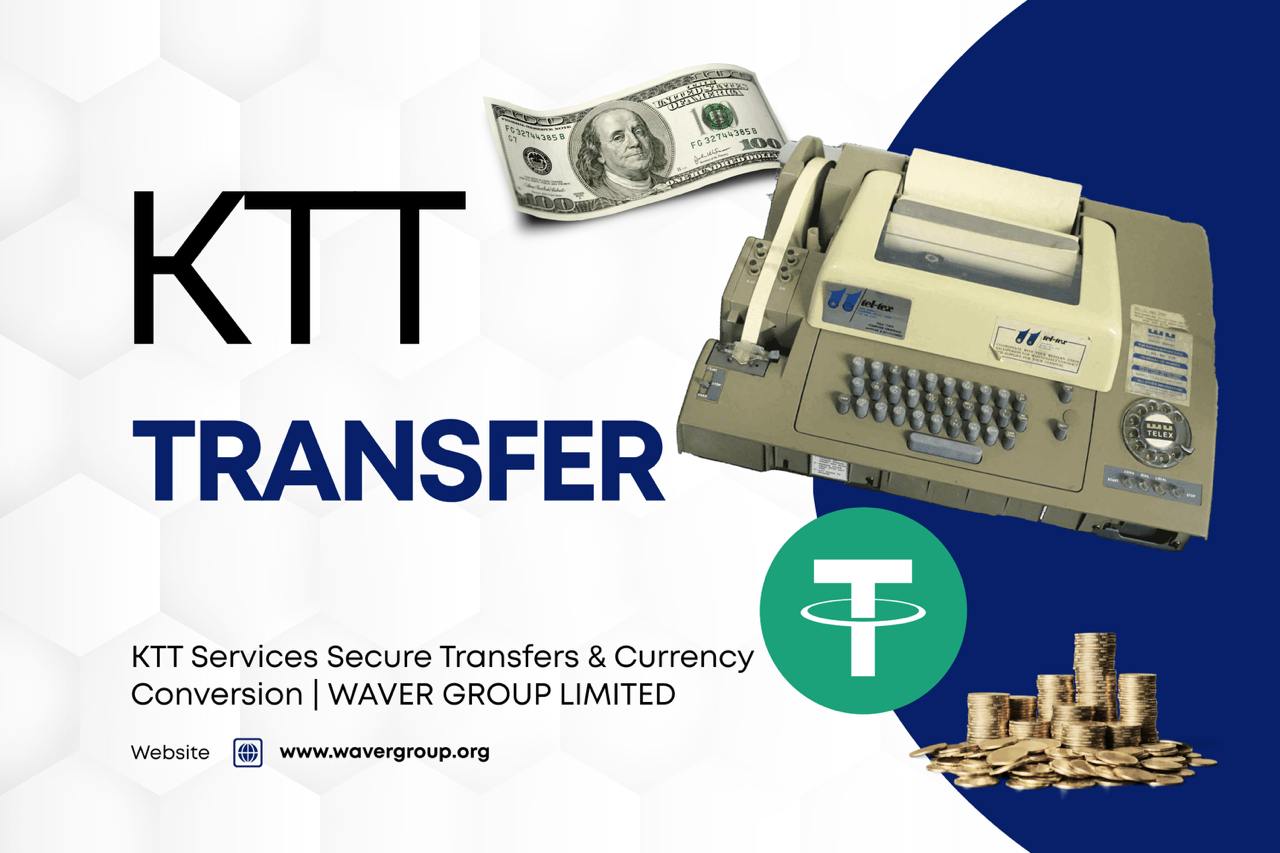When it comes to cross-border payments, the term KTT (Key Tested Telex) transaction often sparks both interest and confusion. Many people assume a KTT is equivalent to a direct money transfer. In reality, that is not the case. A KTT is only a message—it does not move funds by itself.
This distinction is critical for fund owners and businesses who need assurance that their money actually arrives at its destination. Let’s break down what a KTT really means and how the funds are settled in practice.

What Is a KTT Transaction?
A KTT payment is a telex-based communication between banks. It tells one bank to debit a specific account and credit another. Think of it as an instruction slip—it tells the banks what to do but doesn’t execute the transfer on its own.
For example:
-
Bank A sends a KTT message to Bank B instructing a debit of $1 million from an account and a credit to another account.
-
However, unless settlement takes place through established rails, that “transfer” is only on paper.
This is why many false claims exist in the market around KTT transactions. Without settlement, no real money has moved.
The Real Settlement Rails Behind KTT
To complete a KTT transaction, the banking system must rely on recognized settlement mechanisms where actual balances are shifted:
-
Correspondent Banking
Banks maintain accounts with each other, often called nostro and vostro accounts. Money moves when one bank adjusts its balance in the account it holds with another. -
RTGS (Real-Time Gross Settlement)
Central banks operate RTGS systems to allow immediate, irrevocable settlement of large-value transactions. This is the backbone of many international transfers. -
RTP and Clearing Systems
Real-Time Payments (RTP) networks and clearinghouses facilitate the secure transfer of funds, especially for smaller or faster transactions.
Only after one of these systems completes settlement does the receiving bank credit the beneficiary’s account. Until then, the KTT message is incomplete.
Why Settlement Is Crucial
Without settlement, a KTT message carries no financial weight. It is essentially an instruction waiting to be validated. That’s why scams often arise around KTT transactions—some parties present messages as proof of funds, when in reality, no actual transfer has taken place.
For fund owners, this means you must ensure that:
-
The sending bank is capable of both sending the message and completing settlement.
-
Proper documentation and compliance checks are in place.
-
The receiving bank confirms crediting of the funds after settlement.
How Waver Group Limited Supports Fund Owners
At Waver Group Limited, we specialize in bridging the gap between KTT messaging and real settlement. We understand that owners want more than just an instruction slip—they want certainty that funds have actually been delivered.
Our services include:
-
Guiding clients through the full KTT process, from message issuance to settlement.
-
Working with trusted banking partners to ensure correspondent, RTGS, or clearing systems are properly utilized.
-
Providing transparency and documentation at every stage, so owners know exactly where their funds stand.
-
Ensuring compliance, security, and privacy in all transactions.
In short: we help turn a KTT message into a real transfer with verified settlement.
Final Thoughts
A KTT transaction by itself is not a fund transfer—it’s a signal. The true transfer happens when banks use established settlement rails to move money across accounts. For fund owners, understanding this difference is crucial to avoid delays, risks, and misinformation.
That’s where Waver Group Limited comes in. We provide the expertise and infrastructure needed to ensure your funds don’t just exist in a message—they arrive, securely and completely, where they’re supposed to.




